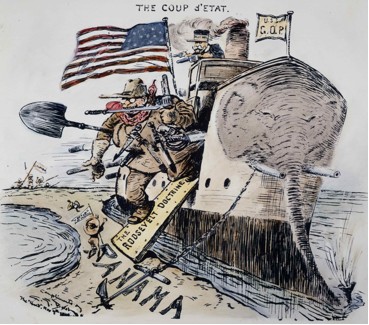Analyze
This political cartoon is about the topic of the Roosevelt Corollary. I know this because Roosevelt is dressed as a police man standing over the Western hemisphere, he is also holding the "big stick" also known as The New Diplomacy. The cartoonist of this is for the Roosevelt Corollary. I know this because it shows Roosevelt as a powerful strong figure, it also seems as if the people around him are praising him in a way and going to him with their comments, questions, and concerns.Some might see this political cartoon in a negative way. I think this because they may see Roosevelt as swinging the stick and knocking people around with it, kind of like using his power to his advantage. In this political cartoon is see the techniques of labeling, exaggeration, and analogy being used. I see the labeling on the stick, and the papers in his hand. I see exaggeration in Roosevelt's size compared to all of the other men. I also see analogy in the people standing as the countries and territories in the Western hemisphere going to Roosevelt for help and protection. This cartoon makes me believe that Roosevelt was a strong and powerful figure, here to help the U.S. and the countries and territories surrounding us.
Citation
http://blogs.baruch.cuny.edu/his1005spring2011/files/2011/03/teddy4.jpg


